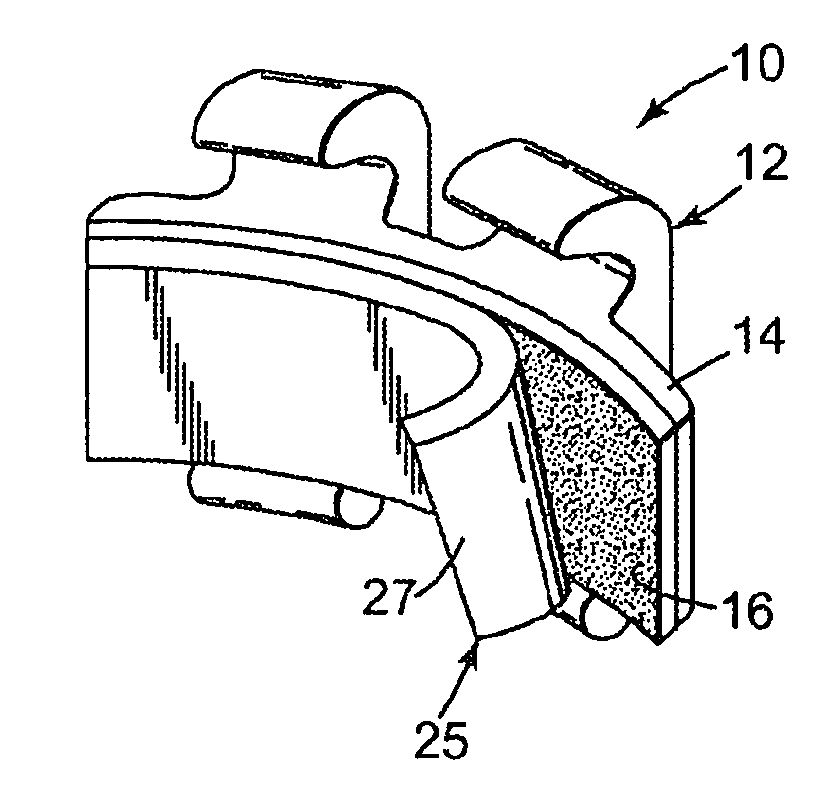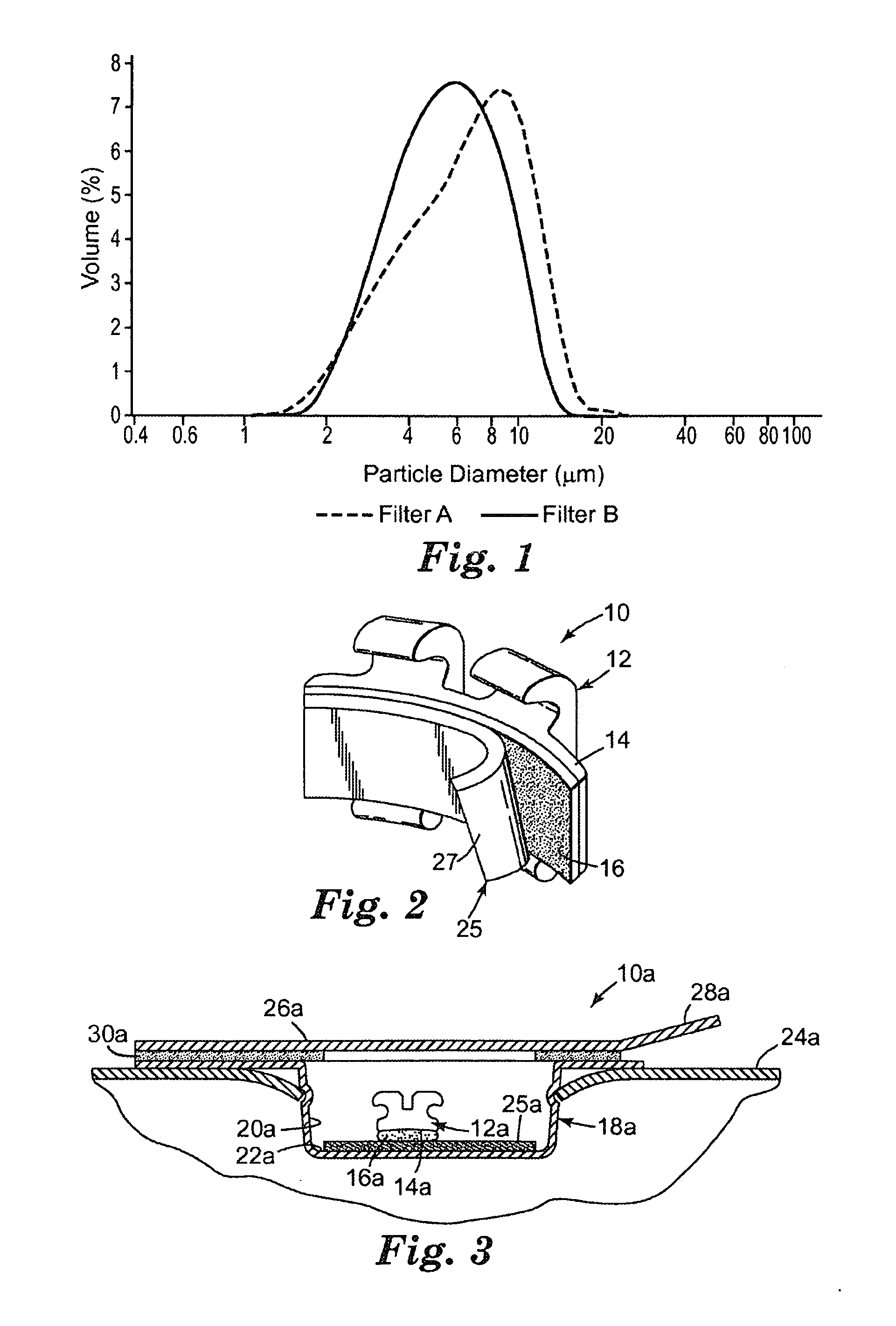Orthodontic composition with polymeric fillers
a polymer filler and composition technology, applied in the field of orthodontic composition, can solve the problems of enamel damage, one or more appliances may be accidentally debonded, and materials are difficult and time-consuming to remove from the patient's teeth, so as to facilitate adhesive removal, facilitate tooth surface removal, and facilitate the effect of handling
- Summary
- Abstract
- Description
- Claims
- Application Information
AI Technical Summary
Benefits of technology
Problems solved by technology
Method used
Image
Examples
examples
[0106]As used herein,
[0107]“BisGMA” refers to 2,2-bis[4-(2-hydroxy-3-methacryloyloxypropoxy)phenyl]propane;
[0108]“BisEMA” refers to ethoxylated (2 mole ethylene oxide) bisphenol A dimethacrylate
[0109]“BHT” refers to 2,6-Di-tert-butyl-4-methylphenol;
[0110]“CPQ” refers to camphorquinone;
[0111]“EDMAB” refers to ethyl-4-(N,N-dimethylamino)benzoate;
[0112]“Iodonium PF6” refers to iodonium hexafluorophosphate;
[0113]“HEMA” refers to 2-hydroxyethyl methacrylate;
[0114]“TEGDMA refers to tetraethylene glycol dimethacrylate;
[0115]“UDMA” refers to urethane dimethacrylate;
[0116]“SR340” refers to 2-phenoxyethyl methacrylate, available from Sartomer Company, Inc. in Exton, Pa.;
[0117]“PMMA” refers to crosslinked poly(methyl methacrylate) filler, prepared and described in Comparative Example 8 in U.S. Pat. No. 5,238,736 (Tseng et al.);
[0118]“PSt” refers to poly(styrene) filler, prepared and described in Comparative Example 9 in U.S. Pat. No. 5,238,736 (Tseng et al.);
[0119]“P(St-EMA)” refers to poly(st...
PUM
| Property | Measurement | Unit |
|---|---|---|
| particle size | aaaaa | aaaaa |
| particle size | aaaaa | aaaaa |
| particle size | aaaaa | aaaaa |
Abstract
Description
Claims
Application Information
 Login to View More
Login to View More - R&D
- Intellectual Property
- Life Sciences
- Materials
- Tech Scout
- Unparalleled Data Quality
- Higher Quality Content
- 60% Fewer Hallucinations
Browse by: Latest US Patents, China's latest patents, Technical Efficacy Thesaurus, Application Domain, Technology Topic, Popular Technical Reports.
© 2025 PatSnap. All rights reserved.Legal|Privacy policy|Modern Slavery Act Transparency Statement|Sitemap|About US| Contact US: help@patsnap.com


